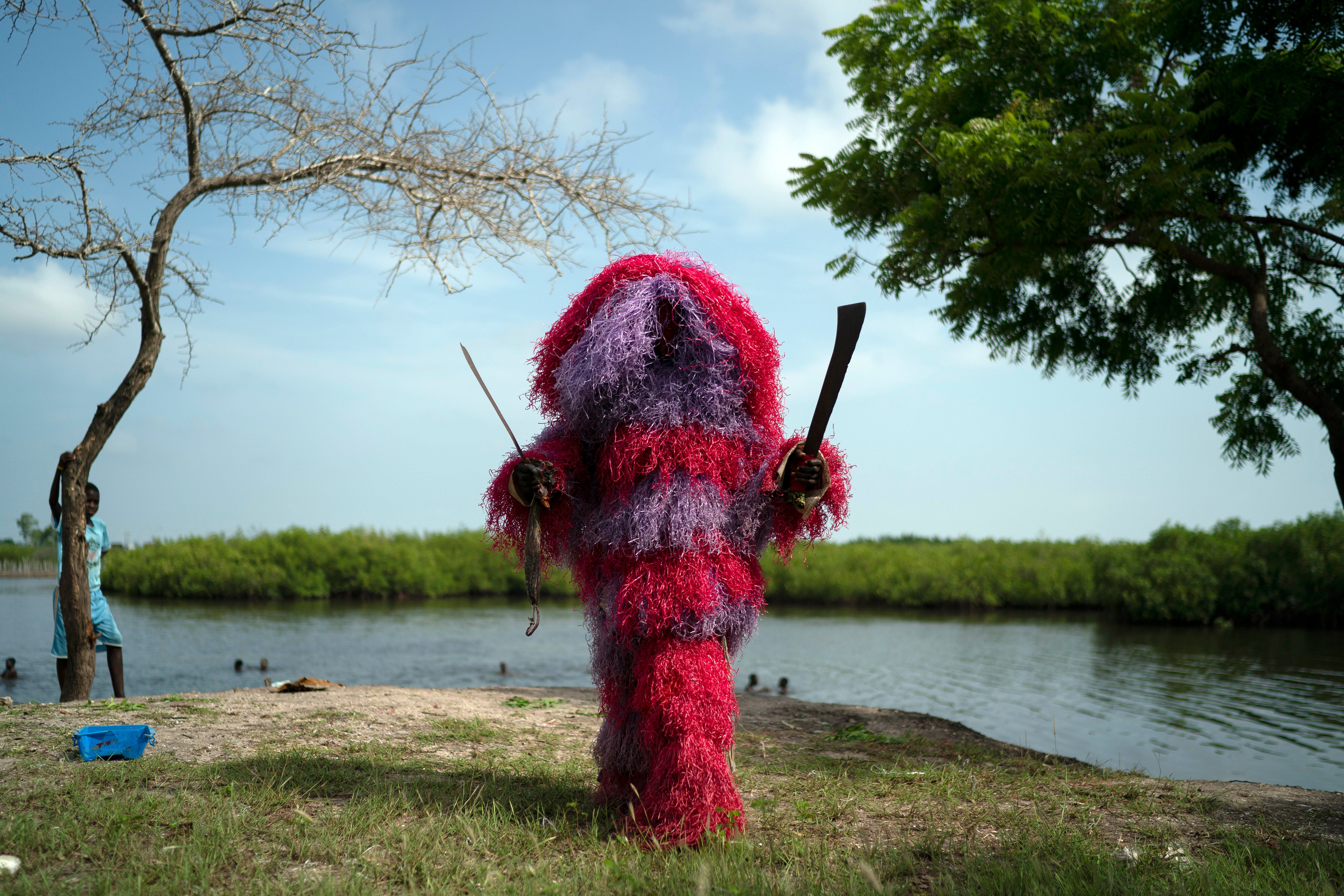AP PHOTOS: In Gambia, Kankurang initiation rites for boys

Sharp sounds of clanking machetes cut the air as a warning that the Kankurang is coming.
Fearful children nearby run inside their homes as the scary figure approaches, grunting. Others, more curious, risk a closer look at the man dressed to represent the spiritual figure.
The traditional Kankurang wears a mask made of bark and his body is covered in leaves and red fiber from the faara tree. Other Kangkurangs with him wear colorful outfits with masks of cowrie shells.
The Kankurangs are followed by a small procession of teenagers and young men who are accompanying four young boys nearing the end of a month-long initiation rite, which is practiced by the Mandinka ethnic groups in Gambia and neighboring Senegal
Despite his fearsome appearance, the Kankurang symbolizes the spirit that provides order and justice and is considered a protector against evil. He appears at ceremonies where circumcised boys are taught cultural practices, including discipline and respect.
“This is the place where we trained them (the boys) how to respect people and how to respect elders and so on,” said Mamadou Jallow, 50, who leads the ceremony and looked after the boys during the four-week initiation period.
He explained that the Kankurang is a spirit and humans don’t have his power, but during the ceremonies some men dress like the Kankurang to drive away evil from the boys.
“Evils. They are afraid of it. So maybe when we put it (a man representing a Kankurang) out, they will think it’s a real one. They will be afraid,” he said.
The Kankurang rite was recognized in 2005 by UNESCO which proclaimed it a cultural heritage. The Kankurang tradition has since spread to other groups in the region — including Wolof, Fula and others — but it is at risk of disappearing because of land development, he said.
“Their traditional practice is in retreat because of the rapid urbanization of most of Senegal and Gambia and the decreasing extent of sacred forests, which are transformed into cultivated land,” according to the UNESCO website.
“This is the culture we have. And me, I’ll always work for the culture to survive,” said Jallow. “As far as I’m alive, I will never leave my culture.”
The night before the initiation rite ends, musicians play traditional drums in the compound where the boys have stayed. Families get a glimpse of the boys, wearing white hoods as they sing songs they’ve learned.
The rite ends with a day of celebration in which families, friends, and neighbors gather for the presentation of the newly initiated boys.
Wearing collars made of candies and money bills, each boy dances in front of the crowd. Relatives and neighbors put small amounts of money in a bucket as a sign of gratitude, to be shared with those who took care of them during their coming-of-age passage.
With joyful music and dance, their community welcomes the boys as men who will carry on their traditions.
Bookmark popover
Removed from bookmarks